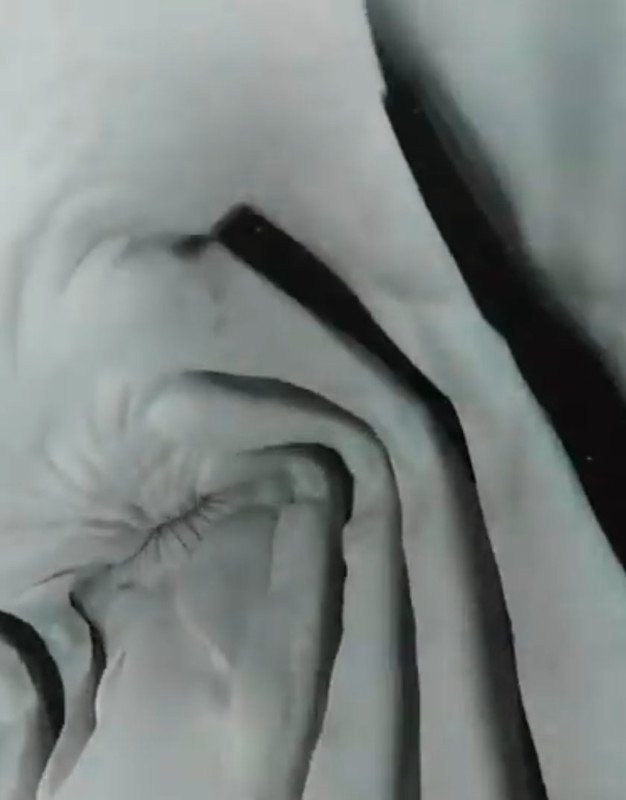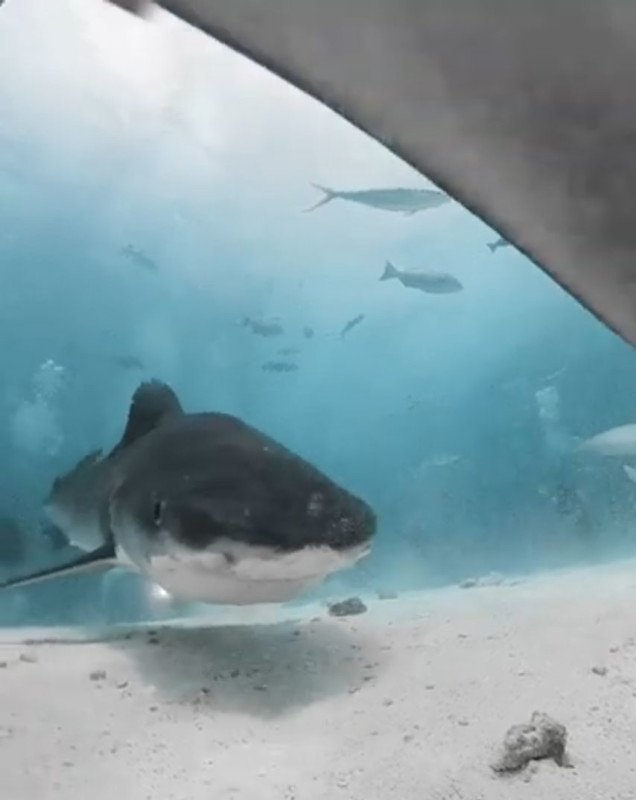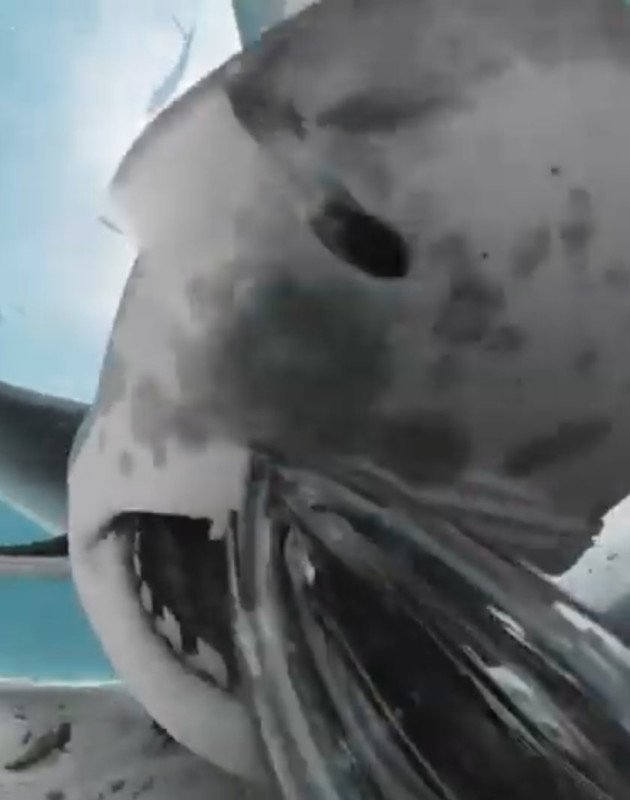Filmmaker, lover ocean and conservationist Zimy Da Kid were doing a documentary in the ocean when one of the shark swimming around he decided to swim over and try the device camera.
As the 27-second recorded video shows, the camera went quite deep into the shark’s mouth and the camera captured the shark’s razor-sharp teeth, as well as gills on the inner wall and its throat.
Looking closely at the shark’s teeth, scientists discovered that the teeth of this ferocious animal contain fluoride, a basic ingredient in today’s toothpastes and mouthwashes. they don’t have tooth decay or other problems. This helps explain why sharks bite their prey so effectively. Their teeth are perfectly designed to do these things, and never get decayed.
What’s interesting is that once you get beyond the row of scary looking teeth, the areas inside the shark’s mouth appear to be very smooth and clean.
Realizing that the camera was not suitable for food and digestion, the shark eventually spat it out and swam away.
The camera used to capture these footage is the $390 Insta360 ONE X2 pocket action camera, which can shoot 360-degree footage at 5.7K resolution. Other features include invisible selfie stick, waterproof to 10 meters, steady cam mode, FlowState stabilization, super bright touchscreen, and 360-degree audio with 4 built-in microphones.

Zimy Da Kid said he hopes his underwater documentary can help make an impact in making people love and protect our planet and the creatures that live on it.
“As an artist, creator and ocean lover, I truly believe that, through filmmaking and filming, we have an important role to play in preserving and fighting for the natural world. “, he wrote on Facebook in January 2022. “Art has the unique power of being able to create emotions within people, and once people start to love something, they start to care about it and protect it. This is exactly what it is. I want to do through my art!”.
“I want to inspire other creators to use their skills and talents to create meaningful things, things that will raise awareness, things that not only create emotion but also educate.” about the enormous challenges that nature is facing today”.
“As an artist, there’s no greater feeling than creating art with purpose. There’s so much to lose in this world, which also means there’s a lot worth fighting for…” .

A new study, conducted by the Global Shark Trends Project and published in Nature on Wednesday, shows that the number of sharks and rays living in the world’s oceans has dropped by more than 70 percent since then. since 1970. The main reason for this rapid decline, the authors say, is rampant fishing. During that time period, the study found “relative fishing pressure” – a concept used to calculate the proportion of sharks and rays caught by fishermen relative to the total population of them globally. – has increased 18 times. It’s a terrifying example of extinction happening around the planet, and could have a huge impact on ecosystems around the world if we don’t change the landscape.

The authors, who come from many parts of the world and have worked together for 10 years, gathered data on the most common species of sharks and rays, all of which inhabit the water. open far beyond the continental shelf. They aim to determine the status of these species based on two indicators set forth by the United Nations Convention on Biological Diversity. The first, the Living Planet index, which tracks global population movements of species since 1970, and the second, the Red List index, which tracks the extinction risk of species based on the state of their population them and the threats they face in the wild. These indicators are also relevant to international goals for human well-being. “These indicators contribute to an assessment of progress towards the United Nations’ Biodiversity and Sustainable Development Goals” – Nathan Pacoureau, lead author of the study and a biologist at Simon Fraser University in British Columbia, said. The authors selected 31 species of the world’s most common sharks and rays for research. But even after diving through the piles of scientific literature and previous government reports, they realized they could only conduct a Living Planet index analysis on 18 of them because of the lack of historical data. Complete population history for the remaining 13 species. After collecting 57 data sets with specific chronological information on 18 species and evaluated by experts from the United Nations International Union for the Conservation of Nature, the authors created a dashboard. on the number of each species in each year over the past 50 years. On average, the study found that the shark population has declined by 71% since 1970, at an average rate of 18.2% per decade.
at Blogtuan.info – Source: Soha.vn – Read the original article here



